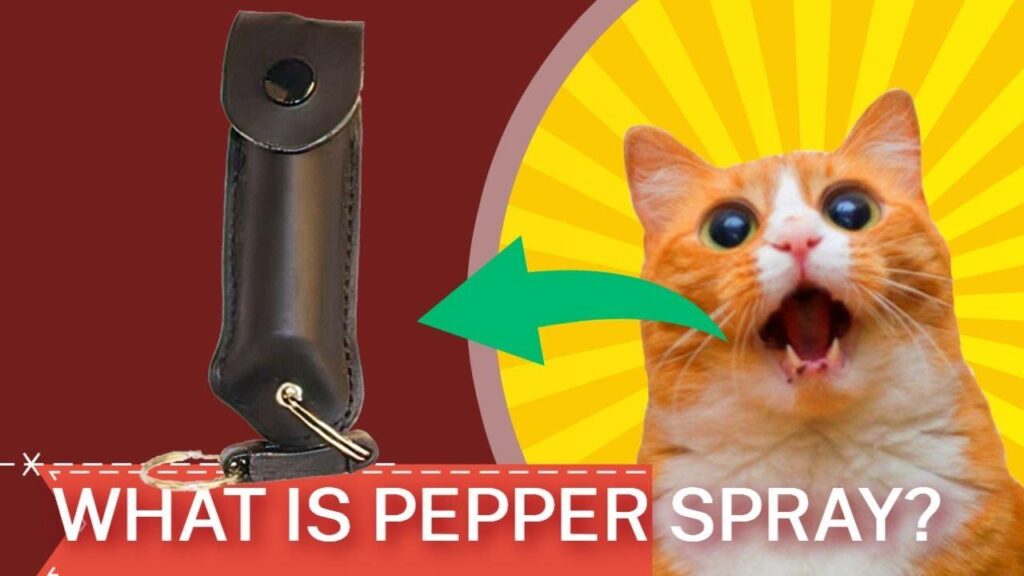Table of Contents
- Common Inactive Ingredients in Pepper Spray and Their Functions
- How Inactive Components Affect the Efficacy and Shelf Life of Pepper Spray
- Potential Allergens and Safety Concerns in Pepper Spray Formulations
- Choosing Pepper Spray Products Based on Inactive Ingredient Profiles
- Future Outlook
Common Inactive Ingredients in Pepper Spray and Their Functions
Beyond the active component capsicum oleoresin, pepper spray formulations often incorporate various inactive ingredients that play crucial roles in ensuring the product’s effectiveness, safety, and shelf life. These substances help stabilize the spray, prevent nozzle clogging, and enhance dispersal patterns. Commonly, you’ll find carrier solvents like propylene glycol or isopropyl alcohol, which aid in dissolving the active ingredient and creating a fine mist on discharge. Additionally, emulsifiers and surfactants are sometimes added to maintain a uniform mixture, preventing separation of the active elements over time.
Apart from solvents and emulsifiers, other typical ingredients include preservatives that prohibit microbial growth, improving the product’s longevity, and propellants such as nitrogen or carbon dioxide, which pressurize the canister for proper spray delivery. Some formulations also contain anti-freezing agents, crucial for maintaining performance in colder climates. These seemingly minor components collectively ensure that the pepper spray performs consistently, remains safe to handle, and functions reliably when needed most.
How Inactive Components Affect the Efficacy and Shelf Life of Pepper Spray
Inactive ingredients, often overlooked, play a crucial role in maintaining the effectiveness and stability of pepper spray over time. These components contribute to the product’s overall chemical balance, ensuring that the active capsaicin remains potent and ready to deploy when needed. Without the right mixture of inert ingredients, the active compounds can degrade, reducing the spray’s immediate irritant effect and thereby compromising its reliability as a self-defense tool.
Moreover, these substances directly influence the spray’s shelf life by protecting the formula from environmental factors such as moisture, oxygen, and temperature fluctuations. Key inactive components commonly include:
- Propellants: Often compressed gases like nitrogen or carbon dioxide, which keep the spray pressurized and consistent in delivery.
- Stabilizers and preservatives: These prevent chemical degradation and extend usability by safeguarding against oxidation and microbial growth.
- Solvents: Help dissolve the active ingredients uniformly, enhancing spray dispersion and ensuring even delivery upon activation.
Understanding how these additives work highlights their importance in producing a reliable, long-lasting pepper spray that meets users’ safety expectations.
Potential Allergens and Safety Concerns in Pepper Spray Formulations
When using pepper spray for self-defense, awareness of potential allergens is crucial. Many formulations incorporate inactive ingredients that may trigger reactions in sensitive individuals. Common additives such as
Safety concerns extend beyond allergenicity, with the chemical composition influencing overall user experience and risk. Ingredients often used as carriers or stabilizers include:
- Triethyl citrate, which acts as a solvent but may cause mild skin irritation
- Isopropanol, sometimes found in formulations, potentially causing burning sensations upon contact
- Anti-freeze agents such as ethylene glycol derivatives, raising toxicity concerns if misused or ingested
Manufacturers continually reformulate products to minimize adverse effects while maintaining efficacy, but consumers should review ingredient lists carefully. Patch testing on a small skin area prior to use can prevent unexpected allergic reactions, ensuring safer personal protection.
Choosing Pepper Spray Products Based on Inactive Ingredient Profiles
When selecting a pepper spray product, it’s crucial to pay attention to the inactive ingredients, as these can influence the spray’s performance, shelf life, and overall user safety. Many manufacturers incorporate stabilizers, propellants, and emulsifiers to ensure the formula disperses effectively and remains potent over time. Common inactive components include propylene glycol, which acts as a carrier fluid, and nitrogen or compressed air used as propellants. These ingredients help maintain the spray’s consistency and pressure but also impact the product’s environmental footprint and potential irritants beyond the active capsaicin compounds.
Additionally, some sprays contain UV dyes or coloring agents that serve a tactical purpose by marking an assailant, aiding law enforcement in identification. Others may include mild preservatives to prevent microbial growth within the canister. When choosing a product, consider if the inactive ingredients are listed transparently and whether they align with your personal sensitivities or allergies. Here are a few factors to keep in mind:
- Allergen potential: Avoid sprays with fragrances or chemicals that may trigger skin reactions.
- Environmental impact: Opt for non-aerosol propellants to reduce ecological harm.
- Durability: Look for stabilizers that protect the active ingredient during storage.
- Tactical advantages: Dyes or UV markers can enhance post-incident identification.
Future Outlook
In conclusion, understanding the common inactive ingredients found in pepper spray products is essential for both safety and informed usage. While these components may not directly contribute to the spray’s effectiveness, they play crucial roles in ensuring stability, shelf-life, and ease of application. Whether you’re a first-time buyer or an experienced user, being aware of what’s inside your pepper spray can help you make better choices and use the product more responsibly. Stay safe and stay informed!Check Our Other Blogs
- StunGun – Your Trusted Source for Stun Guns, Laws, and Self-Defense Tips
- PepperSprayLaws – Your Trusted Resource for Pepper Spray Information
- StunGunLaws – Your Trusted Guide to Stun Gun Legality and Safety




